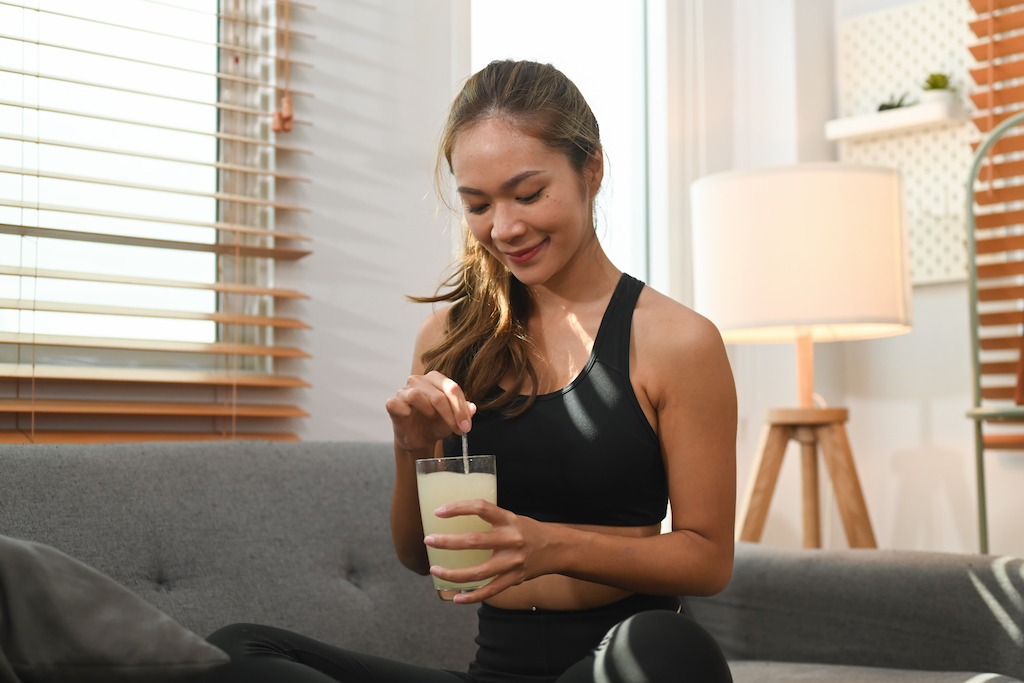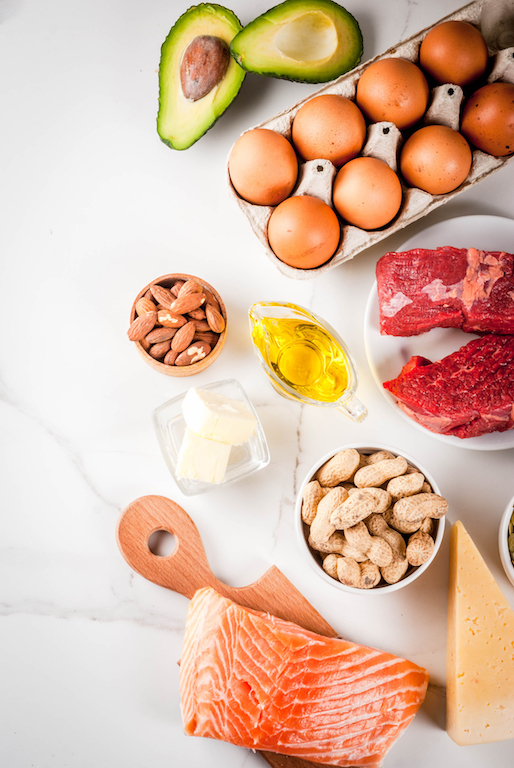When it comes to optimizing your workout routine, nutrition plays a crucial role. Among the key nutrients, proteins stand out as the building blocks of muscle and a vital component for recovery. But the question remains: should you consume proteins before or after your workout? In this article, we’ll explore the science behind protein consumption timing and help you make an informed decision to maximize your fitness gains.
The importance of protein
Before delving into the timing aspect, let’s understand why proteins are so essential for your fitness journey. Proteins are made up of amino acids, which are the fundamental units needed for muscle repair and growth. When you engage in exercise, especially resistance training or high-intensity workouts, you create microscopic damage to your muscle fibers. To repair and grow these muscles, your body requires an adequate supply of amino acids from dietary protein.

The protein timing debate
The debate over when to consume protein primarily revolves around two key aspects: muscle growth and recovery. Let’s take a closer look at both sides of the argument to help you decide whether to prioritize protein intake before or after specific activities.
Protein before: fueling your workout
Fuel your workout for peak performance with the right protein boost. Discover the importance of incorporating protein before exercise to enhance energy levels, support muscle endurance, and optimize your training.

Improved performance
Consuming protein before a workout can provide your body with a readily available source of amino acids. This can potentially enhance your athletic performance by supplying the necessary building blocks for muscle contraction, energy production, and overall endurance. Amino acids like branched-chain amino acids (BCAAs) are particularly beneficial in this regard.

Muscle preservation
When you exercise, especially during intense training sessions, your body can break down muscle tissue for energy. Eating protein before your workout may help reduce muscle protein breakdown, preserving your hard-earned muscle mass.

Satiety and appetite control
Including protein in your pre-workout meal can help control your appetite and keep hunger at bay during exercise. This can be particularly beneficial if you’re trying to manage your weight or follow a calorie-controlled diet.
Protein after: recovery and repair
Maximize your post-workout recovery and repair with the power of protein. Learn why a protein-rich intake is crucial for muscle recovery and growth after exercise. Uncover the science behind protein’s role in repairing damaged tissues, reducing muscle soreness, and promoting overall recovery.
Muscle repair and growth
Post-workout protein consumption is often recommended because it supports muscle repair and growth. After exercise, your muscles undergo a process called protein synthesis, where they rebuild and become stronger. Providing your body with protein after a workout supplies the essential amino acids needed for this process.

Glycogen replenishment
During exercise, your body uses stored glycogen as a source of energy. After a workout, consuming protein alongside carbohydrates can help replenish glycogen stores more efficiently, aiding in recovery for subsequent workouts.

Reduced muscle soreness
While protein alone may not eliminate post-workout muscle soreness entirely, it can help reduce its severity and duration. This means you can recover faster and get back to your training routine sooner.

Finding the right timing for you
The choice between consuming protein before or after a workout largely depends on your individual preferences, goals, and the type of exercise you’re doing. However, there are some general guidelines to consider:
Before a workout:
If you prefer to eat before exercising, aim for a meal or snack containing both protein and carbohydrates about 1-2 hours before your workout. This can provide you with sustained energy and help prevent muscle breakdown during your session.
After a workout:
After intense exercise, your muscles are primed to absorb nutrients. To maximize muscle recovery and growth, consume a protein-rich meal or shake within 2 hours post-workout. Including some carbohydrates in this meal can also help with glycogen replenishment.
Both:
For many individuals, a combination of pre and post-workout protein intake works best. This ensures you have energy for your workout and the necessary nutrients to support recovery and muscle growth afterward.
Experiment:
Ultimately, the ideal timing for protein intake varies from person to person. Experiment with different approaches and listen to your body’s cues. You may find that a specific timing strategy enhances your performance and recovery more effectively.
Lean sources of protein
When it comes to selecting protein sources, prioritizing lean options is a smart choice for your health. Lean proteins, such as skinless poultry, lean cuts of beef, and fish, offer a multitude of benefits. These choices are lower in saturated fats compared to their fatty counterparts, making them heart-healthy and ideal for those focused on weight management. Furthermore, they are packed with essential amino acids that your body requires for muscle repair and growth. Incorporating lean proteins into your diet not only supports your physical fitness goals but also helps maintain overall well-being.

Protein timing is a key factor in optimizing your workout routine. Proteins are essential for muscle repair and growth, making them a crucial component of your fitness journey. The debate over when to consume protein—before or after exercise—hinges on factors like performance enhancement, muscle preservation, and recovery.
Consuming protein before a workout can supply your body with amino acids for energy and muscle preservation, making it an excellent choice for those seeking better athletic performance. Meanwhile, post-workout protein intake aids muscle repair, glycogen replenishment, and reduces muscle soreness, promoting efficient recovery.
Your choice between pre and post-workout protein largely depends on your individual goals and exercise type. Combining both approaches is often beneficial. Additionally, incorporating lean protein sources like poultry, lean beef, and fish into your diet supports overall health and fitness goals. Experimentation and listening to your body will help you find the ideal protein timing strategy for your unique needs.

We love to make you move!
✓ Work out in front of your tv whenever you want.
✓ 24/7 on-demand with more than 500 workouts.
✓ For the whole family.
Working out with Fit at Home
Fit at Home is your NUMBER ONE fitness app! Turn your living room into your own gym with over 500 workouts for the whole family. This transforms your TV into your own yoga studio, fitness club, or meditation space. Fit at Home is available on-demand 24/7 for exercising wherever and whenever you want with just one click on the remote control.
Fit at Home will help you to achieve your fitness goals. Whether you want to lose weight, release stress with meditation, improve your strengt with Pilates, let your kids work out more often, doing a full body workout and more. Fit at Home is there for everyone and any goal.
Transform your TV into your personal gym!

How to eat enough protein a day?
Eating enough protein is essential for overall health, muscle maintenance, and various bodily functions. Here are some tips on how to ensure you consume an adequate amount of protein each day:
- Calculate your protein needs:
- Determine your daily protein requirements based on factors such as age, weight, activity level, and fitness goals. A general guideline is to aim for 0.36 to 0.8 grams of protein per pound of body weight.
- Include protein in each meal:
- Distribute your protein intake throughout the day by including a source of protein in each meal. This helps optimize muscle protein synthesis and keeps you satisfied.
- Choose lean protein sources:
- Opt for lean protein sources to minimize saturated fat intake. Examples include poultry, fish, lean cuts of meat, tofu, legumes, and low-fat dairy products.
- Incorporate plant-based proteins:
- Include plant-based protein sources such as beans, lentils, quinoa, nuts, seeds, and tofu. This is beneficial for variety and can also be a healthier option.
- Snack on protein-rich foods:
- Choose protein-rich snacks, such as Greek yogurt, cottage cheese, hard-boiled eggs, or a handful of nuts, to meet your protein goals between meals.
- Utilize protein supplements:
- If needed, consider protein supplements like protein powder or protein bars. These can be convenient, especially for those with busy lifestyles or specific dietary requirements.
- Plan balanced meals:
- Plan well-balanced meals that include a combination of protein, carbohydrates, and healthy fats. This ensures you get a variety of nutrients and maintain overall nutritional balance.
- Include dairy or dairy alternatives:
- Dairy products and fortified dairy alternatives are excellent sources of protein and also provide essential nutrients like calcium and vitamin D.
- Read food labels:
- Pay attention to food labels to determine the protein content of packaged foods. This helps you make informed choices and track your daily intake.
- Stay hydrated:
- Drinking enough water is important for overall health and can also support your body’s ability to utilize protein effectively.
Remember, individual protein needs vary, and it’s advisable to consult with a healthcare or nutrition professional to determine the right amount of protein for your specific circumstances and goals.